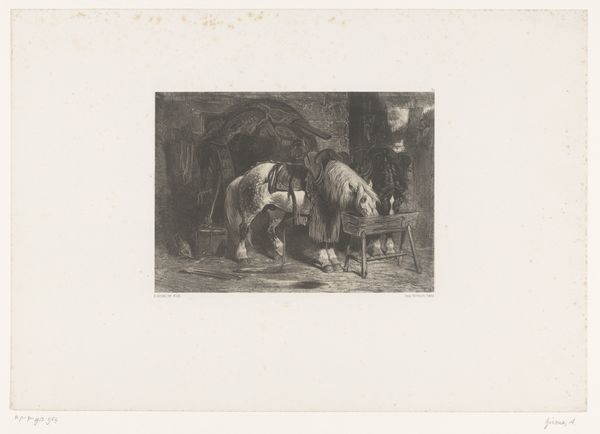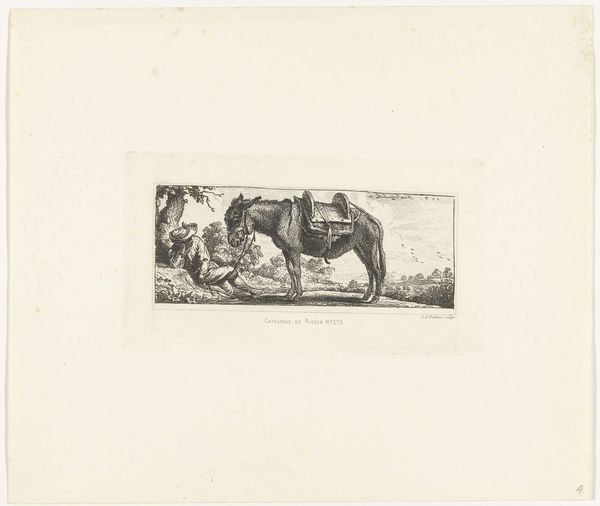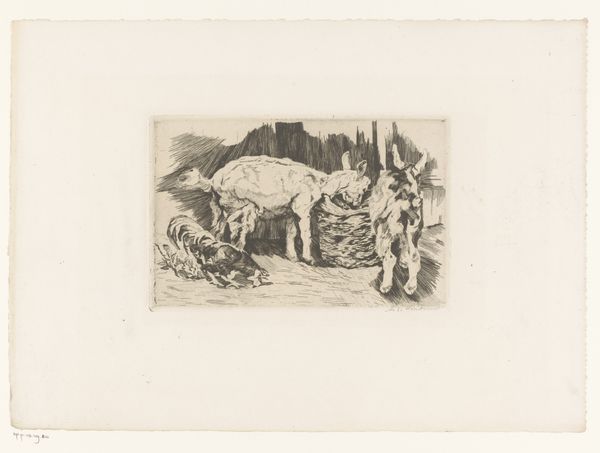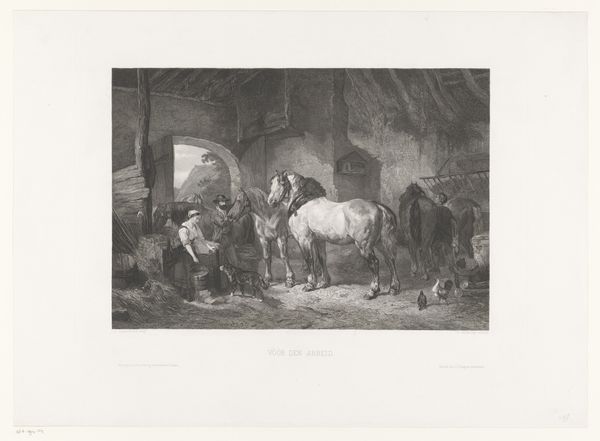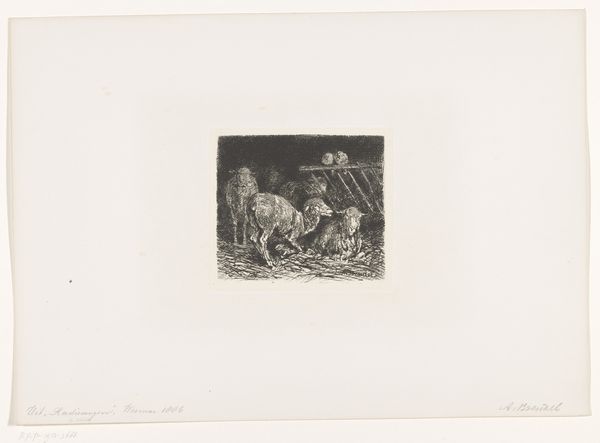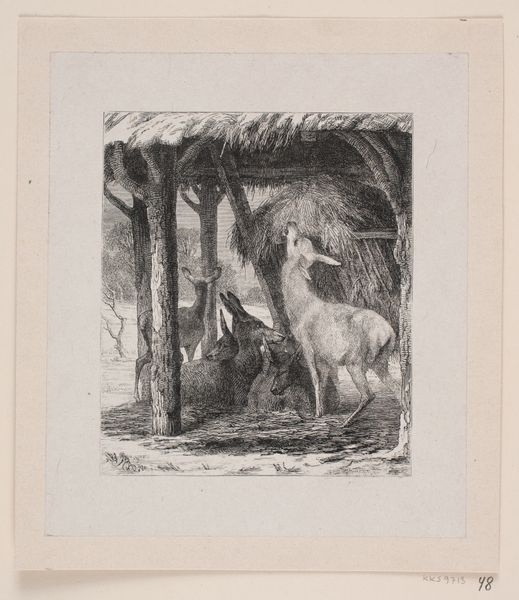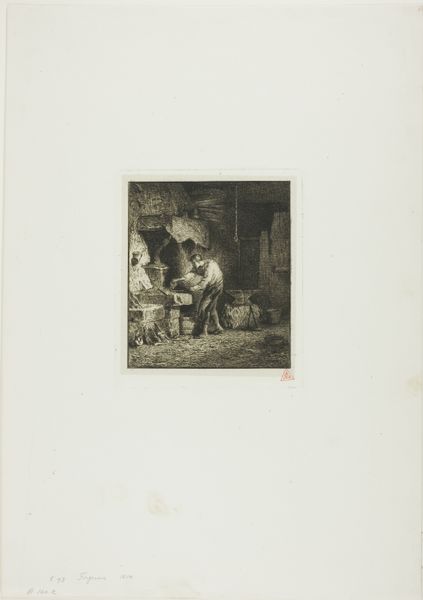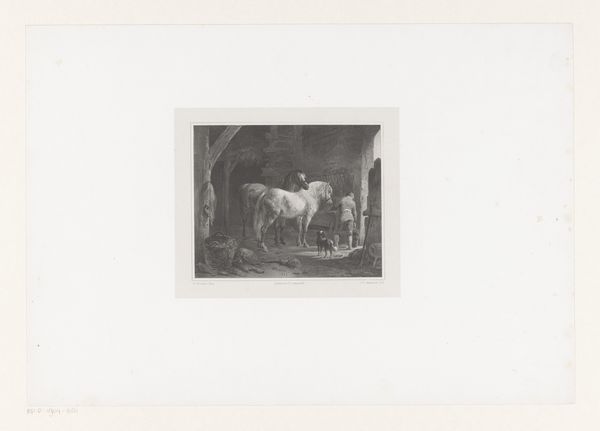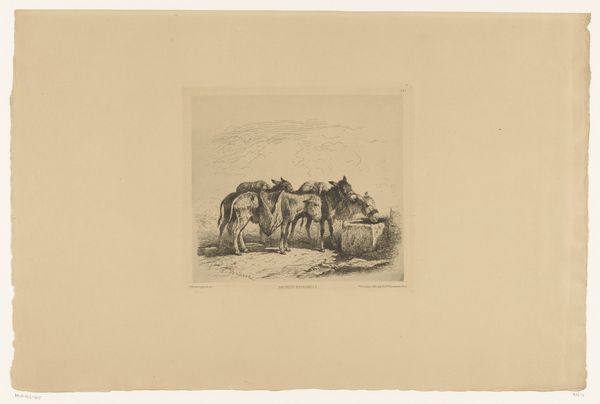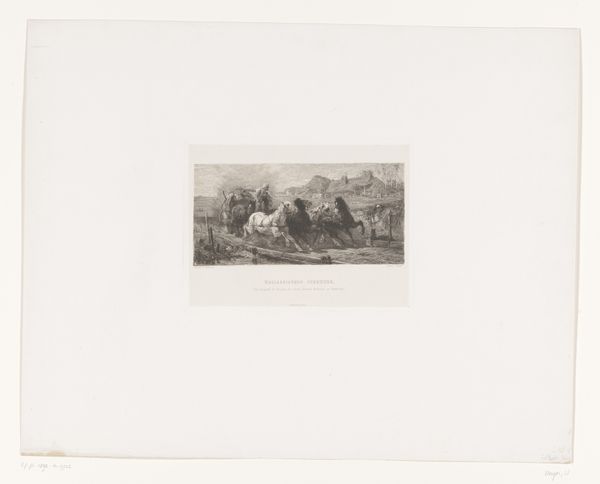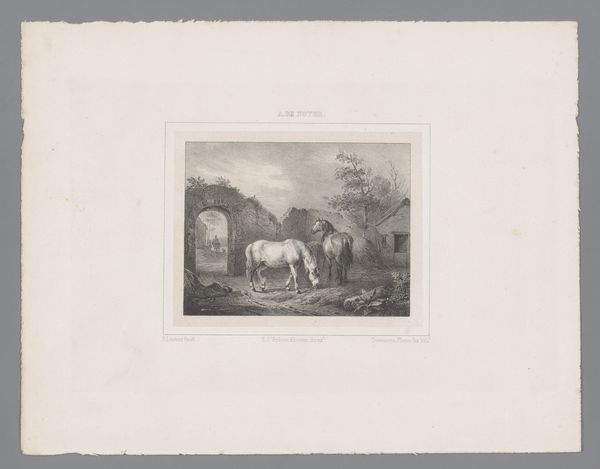
drawing, lithograph, print, etching, pencil
#
drawing
#
lithograph
# print
#
etching
#
dog
#
landscape
#
pencil
#
genre-painting
#
realism
Dimensions: height 270 mm, width 357 mm
Copyright: Rijks Museum: Open Domain
Curator: Welcome. Let's consider Frederik Hendrik Weissenbruch's, "Two Horses and a Dog in a Stable," created sometime between 1849 and 1865. You can find this genre painting on display here at the Rijksmuseum. Editor: Immediately, I am drawn to the somber, muted atmosphere, it has a melancholic feel to it. It feels so quiet, despite containing several figures. Curator: Well, Weissenbruch often portrayed the Dutch landscape, and everyday rural life, with a particular focus on the lives of working-class people and, in this instance, working animals. It reflects the Realist movement’s dedication to representing life truthfully, showing it how it is without idealization. The print’s soft lines render the image, invoking that commitment to observable reality. Editor: Yes, and note how that commitment reveals the social realities and dependencies between the humans, animals, and architecture—even within the walls of a stable, power dynamics play out. Did he spend a lot of time on farms and stables, observing this? Curator: Indeed. It's executed through drawing, lithography and etching on paper, giving the picture an intimate feel, almost as if he were sitting inside of this barn as an observer, making swift strokes to quickly capture the life unfolding before his eyes. The lack of bright colors in this artwork draws a sharp focus on line and shape to provide its realism, further developing Weissenbruch’s signature Realist style. Editor: Thinking of gender too, it presents as classically masculine, doesn't it? Considering the history of labor and agrarian settings through gender. What feelings was he attempting to evoke through that particular style of realism? Is it an empathy? An appeal for better treatment, considering the politics of animals, domestication and labor in that moment? Curator: I think Weissenbruch simply wished to present rural existence as it truly existed, removed from the grand narratives of heroic feats. As industrialization grew, depictions of rural and animal life helped define and idealize older modes of life, and were increasingly romanticized over time. Editor: Maybe that romanticism masked the material conditions though, and obscured any real consideration of those conditions, whether that's his intent or not. But it feels incredibly personal. It inspires so much thought. Curator: Yes, the intimacy draws one into his personal experience. I hope we’ve given you an entry point into viewing the piece today, to see the quiet stillness, a frozen-in-time instance of history through animals. Editor: I see how one must consider all contexts of realism when considering depictions of power. It will definitely encourage me to do further reflection here today.
Comments
No comments
Be the first to comment and join the conversation on the ultimate creative platform.
